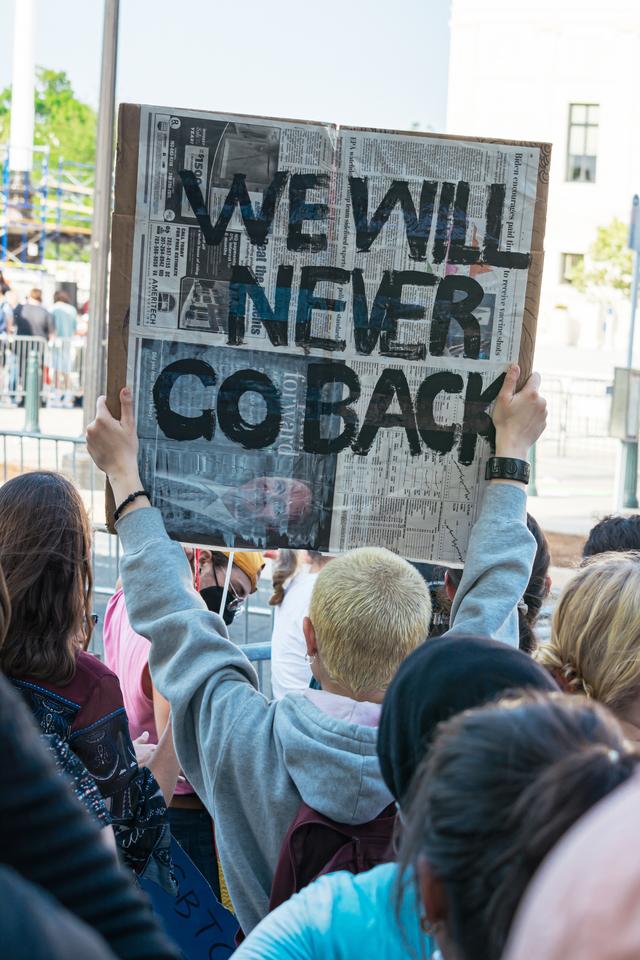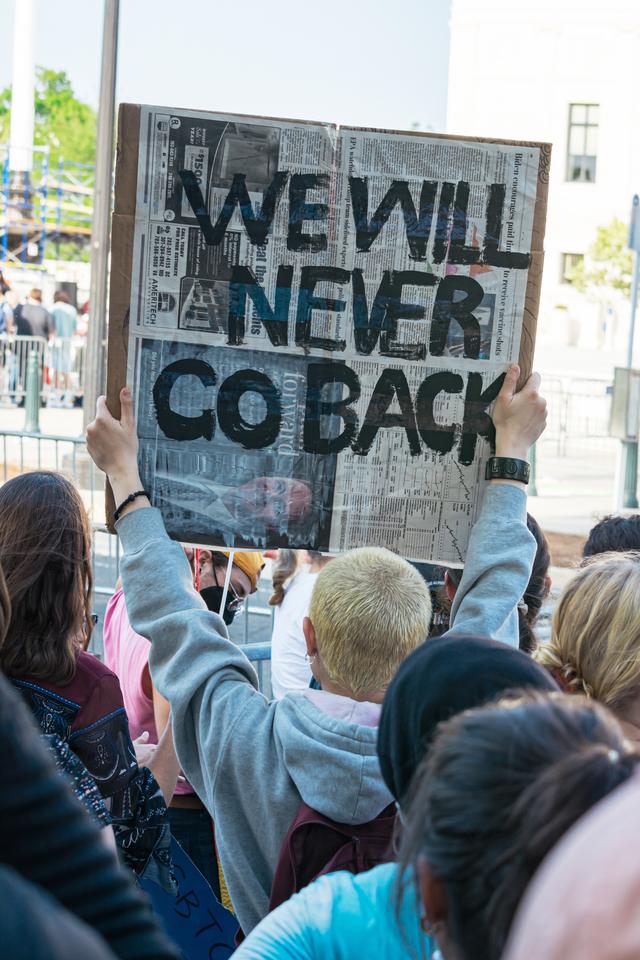By Sam Pizzigati | –
( Inequality.org ) – In our United States today, all of us do not have an “equal opportunity” to become rich — or even comfortable. Rich people like things that way. Grand fortunes only grow grander when the richest among us have plenty of exploitable people around to exploit.
To keep things that way, rich people have gone out of their way over the past half-century to make sure all of us do not have “equal opportunity” to a quality education. This week, with the Supreme Court’s stunning ruling that strikes down affirmative action in higher ed admissions, the most fervent advocates of plutocratic privilege have now completed their squashing of the world’s most ambitious attempt to create a system of public education that can truly guarantee all kids a quality education.
That ambitious effort began all the way back in 1787 when our new nation’s earliest lawmakers, in the Northwest Ordinance, required towns in future states to reserve prime real estate for public schools. Their goal: to ensure that “the means of education shall forever be encouraged.”
“Without education, the founders feared democracy would devolve into mob rule and open doors to unscrupulous politicians and hucksters,” the University of South Carolina Law School’s Derek Black has pointed out. “Our democratic experiment might very well just fail.”
Realizing the founders’ goal of “forever” encouraging public education would end up taking almost forever. Not until the years after World War II would the United States have anything remotely close to a public school system that extended equal opportunity to young people of all colors and classes, to children with and without disabilities. In the 1960s, federal tax dollars finally began helping every community offer all children a quality educational experience.
Those dollars came via progressive tax rates that actually had most of America’s richest contributing something close to their fair tax share.
In those same mid-20th-century decades, we overhauled American higher education. We created networks of public community colleges, all with free or low-cost tuition. We created student grant and loan programs that enabled millions of young people to earn four-year and postgraduate degrees without building up debts that would take them lifetimes to pay off.
Americans who wanted to opt out of this ambitious new world of public education remained free to do so. The rich could still send their kids to private academies. Any families that so chose could send their kids to religious schools — but not on the public dime. Public tax dollars went to fund public education. Those dollars, we believed, were building democracy, teaching people of all backgrounds how to work with and learn from each other.
These noble goals would, of course, regularly go unmet. But the goals themselves — the rhetoric of “equal educational opportunity” — did really matter. Parents and communities, armed with this rhetoric, ventured forth and did noble battle against the still formidable barriers to equal opportunity. They even won many of those battles. We were moving, as a nation, in the right direction.
And then rich people said stop. These rich felt like saps. High taxes on their “hard-earned” incomes were bankrolling the education of other people’s children. Their alma maters, our wealthiest fretted, might even start cutting back on the “legacy admissions” that guaranteed their offspring easy entry into the nation’s most prestigious colleges and universities.
The “indignities” these wealthy endured went well beyond the “disrespect” they felt. They saw the source of their fortunes, their “right” to run Corporate America as they saw fit, under direct threat as the United States entered into the 1970s. The federal government — under a Republican president no less — seemed to be hobbling business at every turn.
At the end of 1970, Richard Nixon had signed into law legislation that created a new federal agency to protect workers from injury and illness. Just a few weeks earlier, the first administrator of another new federal office, the Environmental Protection Agency, had announced his attention to give business polluters no quarter. As an independent agency, William Ruckelshaus pronounced, the EPA had “only the critical obligation to protect and enhance the environment.”
Things were clearly getting out of hand. Business seemed to be taking a shellacking from every direction. New federal agencies. A restless labor movement. Campuses full of profs and students who felt free to ridicule business values. Corporate America clearly had to respond. But how? The U.S. Chamber of Commerce would put that question to Lewis Powell, a leading corporate attorney.
Powell’s answer would come in a confidential 1971 memo, just two months before his nomination to the U.S. Supreme Court. The time had come, Powell declared, “for the wisdom, ingenuity, and resources of American business to be marshalled against those who would destroy it.”
Business confronts, Powell would contend, critics “seeking insidiously” to “sabotage” free enterprise. “Extremists on the left,” he insisted, have become “far more numerous, better financed, and increasingly are more welcomed and encouraged by other elements of society, than ever before.”
Corporate America, Powell would exhort, must show more “stomach for hard-nose” combat. Yet individual corporate leaders, Powell understood, can only do so much. Real strength, he would go on to explain, lies “in careful long-range planning” and “consistency of action over an indefinite period of years.” Real strength demands a “scale of financing available only through joint effort” and “the political power available only through united action and national organizations.”
Powell’s 1971 musings, notes historian Kim Phillips-Fein, “crystallized a set of concerns shared by business conservatives in the early 1970s” — and gave “inspiration” to corporate leaders who would later become familiar names and powerful forces, men like arch Colorado right-winger Joseph Coors.
Together, these newly energized corporate leaders would unleash upon America what political scientists Jacob Hacker and Paul Pierson have called “a domestic version of Shock and Awe.” The number of corporate public affairs offices in Washington, D.C. would quintuple between 1968 and 1978, from 100 to over 500. In 1971, only 175 U.S. corporations had registered lobbyists in Washington. The 1982 total: almost 2,500.
Corporate leaders also bankrolled a series of new militantly “free market” think tanks and action centers: the Heritage Foundation and American Legislative Exchange Council in 1973, the Cato Institute in 1977, the Manhattan Institute in 1978, among many others. The U.S. Chamber of Commerce, for its part, would double its membership between 1974 and 1980 and triple its budget.
Photo by Gayatri Malhotra on Unsplash
Complementing this new ideological infrastructure: a torrent of campaign contributions to rich people-friendly pols. In the mid-1970s, U.S. senators were depending on labor for almost half their campaign funding. By the mid-1980s, senators were getting less than a fifth of their funding from union PACs.
By the early 2000s, adds Jacob Hacker, the Republican Party had solidified its intimacy with “very, very, very rich billionaire donors” and corporate groups. The GOP now marched in total sync with the policy priorities of America’s most fortunate: more regressive tax cuts, more deregulation, and more extreme conservatives on the nation’s judicial benches.
The personal payoff from this synchronization would be huge for America’s deepest pockets. Between 1995 and 2007, sinking effective income tax rates saved America’s 400 richest households an average $46 million per year. The “flip side” of this “aggressive pursuit of lower taxes by the rich”? Hacker and fellow analyst Nathan Loewentheil have the consequential answer: chronic government budget deficits and insufficient funds for public goods like public education.
The predictable result? Everything from overcrowded elementary school classrooms to tuition rates that make higher education unaffordable for vast numbers of American households.
George Washington would not approve. In 1796, in his annual presidential address to Congress, Washington opined that our nation’s lawmakers had no duty “more pressing” than “the common education of a portion of our youth from every quarter.”
We are failing that youth. We are coddling our rich instead.
Via Inequality.org
Content licensed under a Creative Commons 3.0 License




 © 2025 All Rights Reserved
© 2025 All Rights Reserved